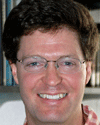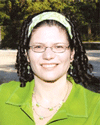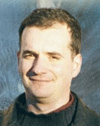Past CNS Talks

Abstract: This talk is the first part of a much larger project on the evolution and dynamics of scientific fields. The long-term motivation for this work is to provide a "satellite" image of the evolution of scientific fields that will help us pinpoint the life-history of "good ideas." In this talk, I take sociology as a case study and describe the evolution and structure of sociological production networks from 1965 to the present. This work moves across citation, coauthorship and "topic" networks to provide a composite image of changes in the field over the last 40 years. I then link these findings substantively to questions about scientific consensus and cohesion in sociology and describe plans for future work on other fields.

The Role of Sociology and Social Networks in Integrating the Health Sciences
Bernice Pescosolido
Abstract: Over the last five or so years, a series of reports from the National Academy of Sciences and the National Institutes of Health, among others, have issued a call for integrating the biomedical sciences (BMS) and socio-behavioral sciences (BMS). While many approaches have been offered over the last 30 years to join the insights of different disciplinary projects together, all have failed to take hold. This presentation reviews those calls and attempts, raising the potential of social network perspective to fill the gap. Based on the example of models of the causes and consequences of the onset of illness/disease, the presentation follows the development of one network-based platform and ends with epistemological questions about future research.

Discipline in Formation: Networks Among Black Studies Professors
Fabio Rojas
Abstract: This paper examines social networks among Black Studies professors. I show that Black Studies is a remarkably open academic discipline. Black Studies professors are most likely to maintain academic contacts with persons outside their programs and discipline. After documenting this basic fact about Black Studies networks, I example the effects of ego-centric network content on academic behaviors and attitudes. I will discuss the importance of the results for the study of academic disciplines.

Abstract: Proteins do not evolve in isolation, but rather as components of complex genetic networks. Therefore, a protein’s position in a network may indicate how central it is to cellular function, and hence how constrained it is evolutionarily. We have examined the protein-protein interaction networks in yeast, worm, and fly, and have found that proteins with a more central position in all three networks—regardless of the number of direct interactors—evolve more slowly and are more likely to be essential for survival. By studying various types of genetic networks in a number of different genomes, we can begin to understand the determinants of sequence evolution—and therefore of phenotypic evolution.

When to get married: From individual mate search to demographic marriage patterns
Peter Todd
Abstract: The choice of a partner for marriage or cohabitation is one of the key events in the course of our lives. But the scientific study of marriage is typically pursued by two single research traditions that themselves should be wedded: demographic research with data on aggregate population-level patterns such as age at marriage and proportion ever marrying, and psychology and economics with models of the (often heterogeneous and culturally varying) individual-level processes that can end in the decision to cohabit or marry. How can the former top-down macro perspective and the latter bottom-up micro view be brought together to speak to each other?

A Computational Framework for Analysis of Dynamic Social Networks
Tanya Berger-Wolf
Abstract: Finding patterns of social interaction within a population has wide-ranging applications including: disease modeling, cultural and information transmission, phylogeography, conservation, and behavioral ecology. Scientists have successfully modeled social interaction with networks. One of the intrinsic characteristics of societies is their continual change. However, majority of the social network analysis methodologies today are essentially static in that all information about the time that social interactions take place is discarded or long time series are averaged to discern the overall or long-term strength of connections. Such approach not only may give inaccurate or inexact information about the patterns in the data, but it prevents us from even asking questions about the temporal causes and consequences of social structures. I will present a new mathematical and computational framework that allows analysis of dynamic social networks addressing the time component explicitly.

Integrating micro-and macroevolution of development: A case study on horned beetles
Armin Moczek
Abstract: A fundamental goal of evolutionary biology is to understand how ecological, developmental and genetic processes interact in the genesis of novel phenotypic traits. My research addresses this question by studying the ecological, developmental, and genetic underpinnings of a dramatically diverse class of traits: beetle horns. Several thousand species of beetles have evolved horns or horn-like structures, and a remarkable diversity of horn phenotypes exists both below and above the species level. At the same time beetle horns are unique, novel structures that lack obvious homologues in other taxa. In the first part of my presentation I will explore the behavioral and ecological context in which beetle horns function and evolve, and the developmental mechanisms that mediate morphological diversification in horn expression on the level of populations. In the second half I will then explore how understanding the developmental genetic regulation of horn expression can provide important insights into the ancestry of horns, as well as the mechanisms that enabled the diversification of horn phenotypes on different levels.

Manifestation of Research Specialty Processes in Collections of Journal Papers
Steven A. Morris
Abstract: A research specialty is a self-organized social organization whose members tend to study a common research topic, attend the same conferences, publish in the same journals, and belong to the same "invisible colleges." Research specialties create their on body of literature, and a "collection of papers" is defined as a comprehensive sample of such a body of literature.
| 6:00 PM | Wells Library 001

Hot Spot Detection in a Network Space: Geocomputational Approaches
Ikuho Yamada
Abstract: Because human activities are highly dependent on transportation networks, various spatial phenomena are also conditioned or constrained by the networks. For example, vehicle crashes occur only on the streets and crime locations geocoded with a street address system are basically all on the streets. Though analyzing clustering tendency and detecting clusters (or hot spots) is a good starting point to understand a spatial phenomenon and further to make decisions on controlling the phenomenon or related human activities, analytical methods designed for a planar space are likely to yield biased results leading us to inappropriate decisions.
| 6:00 PM | Wells Library 001

The Paths that Groups Make
Robert Goldstone
Abstract: Just as ants interact to form elaborate colonies and neurons interact to create structured thought, groups of people interact to create emergent organizations that the individuals may not understand or even perceive. My laboratory has begun to study the emergence of group behavior from a complex adaptive systems perspective. We have developed an internet-based experimental platform (for examples, see http://groups.psych.indiana.edu/) that allows groups of 2-200 people to interact with each other in real time on networked computers. Agent-based computational models are used as accounts of the experimental results.

Are global epidemics predictable?
Vittoria Colizza
Abstract: We present a stochastic computational framework for the forecast of global epidemics that considers the complete world-wide air travel infrastructure complemented with census population data. Here we address two basic issues in global epidemic modeling: i) We study the role of the large scale properties of the airline transportation network in determining the global diffusion pattern of emerging disease; ii) We evaluate the reliability of forecasts and outbreaks scenarios with respect to the intrinsic stochasticity of disease transmission and traffic flows. In order to address these issues we define a set of novel quantitative measures able to characterize the level of heterogeneity and predictability of the epidemic pattern and its relation with the network's structure, These measures may be used for the analysis of containment policies and epidemic risk assessment.

Network Science: A Theoretical and Practical Framework
Alessandro Vespignani and Katy Börner
Abstract: The first part of this talk presents a theoretical framework for network science as a basis for the comparison and integration of the many different techniques and algorithms developed in mathematics, statistics, physics, social sciences, bibliometrics/scientometrics, and other scientific disciplines. The second part of the talk provides an overview of network measurement and visualization techniques as a means to increase our understanding of the structure and dynamics of networks. We conclude with a discussion of opportunities and challenges for network science.

Coevolution of knowledge networks and 21st century cyberinfrastructure
Noshir S. Contractor
Abstract: Recent advances in digital technologies invite consideration of organizing as a process that is accomplished by global, flexible, adaptive, and ad hoc networks that can be created, maintained, dissolved, and reconstituted with remarkable alacrity. This presentation describes a multi-theoretical multilevel (MTML) model of the socio-technical motivations for creating, maintaining, dissolving, and reconstituting knowledge and social networks. Using examples from his research in emergency response networks, transnational immigrant networks, food safety networks, public health networks, and environmental engineering networks and other networks in the public interest, Contractor develops a framework to understand how the discovery, diagnosis, and design of social and knowledge networks enable the growth of cybercommunities and are in turn enabled by cyberinfrastructures.

Networks and Geography
Mark Newman
Abstract: In many networks, such as road or rail networks, pipelines, or electricity grids, the nodes occupy positions in real space (as opposed to citation networks or metabolic networks, for example, where positions of nodes have no meaning). Empirical studies of such networks reveal some interesting things.

Extracting information from complex networks: From metabolism to collaboration networks
Roger Guimera
Abstract: Elements in social, biological, physical, and chemical systems are often connected through complex interaction networks. High-throughput techniques and increased computational power are leading to an explosive growth in the size of databases, and creating the opportunity to revolutionize our understanding of these complex networks and, finally, of problems as diverse as cellular dynamics or social organization.

Abstract: One of the ways to measure and predict research influence, direction and impact is through citation analysis. Articles cite one another, and citations can be counted, and lineages traced. Co-citation analysis is another way of analyzing structure and influence: Who is cited together with whom? Hub/authority analysis allows articles to be weighted by whether they are reviews citing many related articles, or they are influential works cited by many articles.
| 6:00 PM | Wells Library 001

The architecture of Complexity: From the Cell to the World Wide Web and from Budapest to Indiana. International symposium on Creativity, Mind, and Brain in Hungarian Scholarship: Past and Present.
A. Laszlo Barabasi

Coming to grips with biological complexity at the NIH
Eric Jakobsson
Abstract: It is a truism to the point of cliche that biology is the study of complex systems. But with the advent of high throughput experimental techniques and widely accessible computing power, the truism/cliche of complexity is effecting profound changes in the logical structure of at least some biological research.

Metadata, Ontologies, and Provenance: Towards Extended Forms of Data Management
Beth A. Plale and Yogesh Simmhan
Abstract: Managing the vast quantities of data and information used in computational science investigations has become untenable for the individual scientist as the models with which they work grow larger and more powerful. The meteorologists that we work with, for instance, are working towards on-demand weather forecasting drawing data from dozens of observational sources to generate what the meteorologists call "ensemble runs", runs containing 500 or more instances of the model simultaneously.

Studying the emergent 'Global Brain' in large-scale co-author networks and mapping the 'Backbone of Science'
Katy Börner
Abstract: About 40 years ago, Derek J. deSolla Price suggested studying the science using the scientific methods of science. Today, research on 'Mapping Knowledge Domains' -- see PNAS 101 (Suppl. 1) Apr 6, 2004 -- aims to develop methods to analyze, model, and visualize the structure and evolution of science. The first part of this talk presents a suite of approaches and measures aimed at the quantitative study of the evolution of scientific co-authorship teams into tightly coupled global networks.

Phonological Neighbors in a Small World: What can graph theory tell us about word learning?
Michael S. Vitevitch
Abstract: Analysis of the phonological word-forms in the mental lexicons of children and adults show that the adult lexicon has a short path length, a high clustering coefficient, and a power-law degree distribution, suggesting that the lexicon is a small world network with a scale-free topology. These characteristics were not present at earlier points in time (16- and 18-months of age), suggesting that the lexicon undergoes significant restructuring and self-organization over time. Furthermore, the results from a psycholinguistic experiment using a lexical decision task demonstrated that listeners were sensitive to variation in the clustering coefficient of words. The implications of viewing the exicon from a graph theoretic perspective for word learning and lexical access are discussed, as is the possibility of unifying accounts of language processing and development.

Architecture of Weighted Complex Networks
Marc Barthélemy
Abstract: In addition to topological complexity, real-world networks display a gradation in the intensity strength between nodes-the weights of the links. I will present results on two examples of transportation networks-the airline network and an inter-cities network. The nodes in these networks are locations and the weights represent the number of individuals going from one node to the other.
| 4:00 PM | Wells Library 107

Developments in the 'Physics' of Cooperation
Mark Buchanan

The Structure of Nonprofit Organizational Interactions: Initial Findings and Implications
Hank Green
Abstract: Borgatti and Cross have shown that managerial interactions in some for-profit firms display an entailment structure. In this talk, I report a similar form of entailment among a group of 16 nonprofit international development firms in Washington D.C. Specifically, the set of relations defined by general, advice-seeking, informal, and formal interactions are investigated. To determine the degree to which one matrix is entailed in another, I introduce a measure of entailment for binary sociomatrices that relies on quadratic assignment permutation algorithms to generate probability distributions.

Abstract: Fuzzy graphs are weighted graphs whose edges are characterized by weights in the unit interval. We discuss a particular type of fuzzy graphs which are reflexive and symmetrical (undirected) and are known as proximity graphs. We discuss how we build such graphs from co-occurrence data extracted from several electronic resources, and use them to represent knowledge in an associative manner. We show that such distributed knowledge representations are useful for information retrieval, text mining, and knowledge discovery tasks which we have applied to recommendation systems, social network analysis, and knowledge discovery in Biology.





